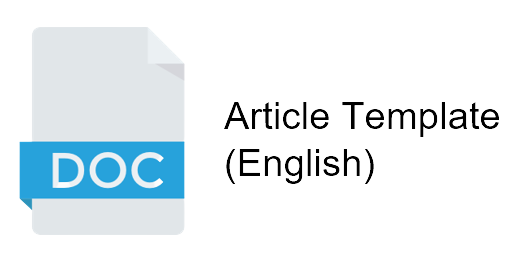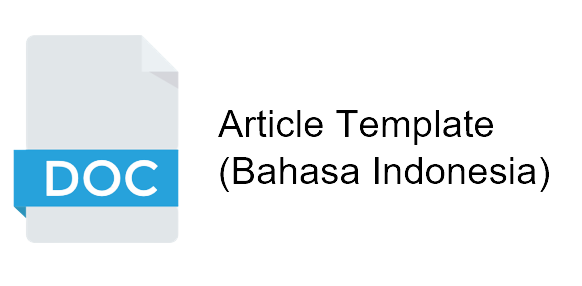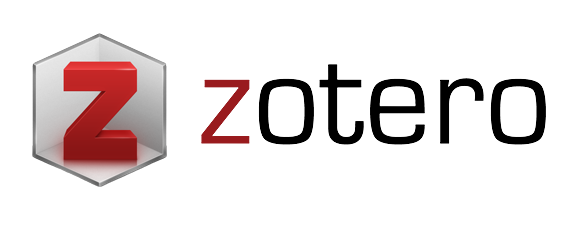Effect of Archival-based Content on Instagram Engagement: A Study on @arsipugm
Thoriq Tri Prabowo(1*), Nora Saiva Jannana(2), Siwi Anjarwati(3)
(1) King Mongkut's Institute of Technology Ladkrabang
(2) Program Studi Manajemen Pendidikan Islam, Fakultas Ilmu Tarbiyah dan Keguruan, UIN Sunan Kalijaga Yogyakarta
(3) SMA Terpadu Pondok Pesantren Nurul Huda
(*) Corresponding Author
Abstract
Keywords
Full Text:
PDFReferences
AlAwadhi, S., & Al-Daihani, S. M. (2019). Marketing academic library information services using social media. Library Management, 40(3/4), 228–239. https://doi.org/10.1108/LM-12-2017-0132
Bountouri, L. (2017). Promoting archival material in the Social Web. In L. Bountouri (Ed.), Archives in the Digital Age (pp. 51–60). Chandos Publishing. https://doi.org/10.1016/B978-1-84334-777-4.00005-0
Bountouri, L., & Giannakopoulos, G. (2014a). The Use of Social Media in Archives. Procedia - Social and Behavioral Sciences, 147, 510–517. https://doi.org/10.1016/j.sbspro.2014.07.146
Crymble, A. (2010). An analysis of twitter and facebook use by the archival community. Archivaria, 70, 125–151. Scopus.
Dhanesh, G., Duthler, G., Li, K. (2022). Social media engagement with organization-generated content: Role of visuals in enhancing public engagement with organizations on Facebook and Instagram. Public Relations Review 42(2), 102174. https://doi.org/10.1016/j.pubrev.2022.102174
Fong, K. C. H., Au, C. H., Lam, E. T. H., & Chiu, D. K. W. (2020). Social network services for academic libraries: A study based on social capital and social proof. The Journal of Academic Librarianship, 46(1), 102091. https://doi.org/10.1016/j.acalib.2019.102091
Gołąb-Andrzejak, E. (2022). Enhancing Customer Engagement in Social Media with AI – a Higher Education case study. Procedia Computer Science, 207, 3028–3037. https://doi.org/10.1016/j.procs.2022.09.361
Iacovino, L. (2015). Shaping and reshaping cultural identity and memory: Maximising human rights through a participatory archive. Archives and Manuscripts, 43(1), 29–41. Scopus. https://doi.org/10.1080/01576895.2014.961491
Joo, S., Choi, N., & Baek, T. H. (2018). Library marketing via social media: The relationships between Facebook content and user engagement in public libraries. Online Information Review, 42(6), 940–955. https://doi.org/10.1108/OIR-10-2017-0288
Joo, S., Lu, K., & Lee, T. (2020). Analysis of content topics, user engagement and library factors in public library social media based on text mining. Online Information Review, 44(1), 258–277. https://doi.org/10.1108/OIR-11-2018-0345
Kosciejew, M. (2022). National archives, records and the coronavirus pandemic: A comparative thematic analysis of initial international responses to COVID-19. Global Knowledge, Memory and Communication, 71(8–9), 732–753. Scopus. https://doi.org/10.1108/GKMC-04-2021-0066
Lam, A. H. C., Ho, K. K. W., & Chiu, D. K. W. (2022). Instagram for student learning and library promotions: A quantitative study using the 5E Instructional Model. Aslib Journal of Information Management, 75(1), 112–130. https://doi.org/10.1108/AJIM-12-2021-0389
Lam, E. T. H., Au, C. H., & Chiu, D. K. W. (2019). Analyzing the use of Facebook among university libraries in Hong Kong. The Journal of Academic Librarianship, 45(3), 175–183. https://doi.org/10.1016/j.acalib.2019.02.007
Maluleka, J., Nkwe, M., & Ngulube, P. (2023). Online presence of public archival institutions of South Africa. Collection and Curation, 42(3), 88–93. Scopus. https://doi.org/10.1108/CC-10-2022-0034
Mukwevho, J., & Ngoepe, M. (2019). Taking archives to the people: The use of social media as a tool to promote public archives in South Africa. Library Hi Tech, 37(3), 374–388. Scopus. https://doi.org/10.1108/LHT-11-2017-0228
Munoz, C. L., & Towner, T. (2021). Do high engagement Instagram images influence presidential candidate evaluation? The moderating effect of familiarity. Journal of Research in Interactive Marketing, 16(4), 514–533. https://doi.org/10.1108/JRIM-01-2021-0003
Paliienko, M. (2021). Social media as an important tool in communication strategy of Ukrainian archives. Atlanti+, 31(2), 25–36. Scopus.
Prabowo, T. T. (2021). Analisis Konten Media Sosial Arsip UGM di Masa Pandemi Covid-19: Peluang dan Tantangan. Khazanah: Jurnal Pengembangan Kearsipan, 14(2), Article 2. https://doi.org/10.22146/khazanah.61730
Rahman, M. M., & Shoeb, M. Z. H. (2020). Redesigning archive literacy service by using social media as a tool: Cases in Japan archive centers. Annals of Library and Information Studies (ALIS), 67(2), Article 2. https://doi.org/10.56042/alis.v67i2.32920
Rossmann, D., & Young, S. W. H. (2015). Social media optimization: Making library content shareable and engaging. Library Hi Tech, 33(4), 526–544. https://doi.org/10.1108/LHT-05-2015-0053
Serafinelli, E., & Serafinelli, E. (2018). New Approaches to Digital Photography and Online Photosharing. In Digital Life on Instagram (pp. 1–45). Emerald Publishing Limited. https://doi.org/10.1108/978-1-78756-495-420181001
Wagner, K. (2017). The personal versus the institutional voice in an open photographic archive. Archival Science, 17(3), 247–266. Scopus. https://doi.org/10.1007/s10502-016-9273-9
Washburn, B., Eckert, E., & Proffitt, M. (2013). Social Media and Archives: A Survey of Archive Users. In OCLC Online Computer Library Center, Inc. OCLC Online Computer Library Center, Inc. https://eric.ed.gov/?id=ED564812
Weaver, R. G. (2022). #FromTheArchives: An Assessment of a Successful Social Media Program in an Academic Archives. The American Archivist, 85(1), 202–222. https://doi.org/10.17723/2327-9702-85.1.202
Wright, T., & Benoit, E. (2019). Technology Use in Designing Curriculum for Archivists: Utilizing Andragogical Approaches in Designing Digital Learning Environments for Archives Professional Development. Preservation, Digital Technology and Culture, 48(2), 85–94. Scopus. https://doi.org/10.1515/pdtc-2019-0005
Yavetz, G., & Aharony, N. (2020). Social media in government offices: Usage and strategies. Aslib Journal of Information Management, 72(4), 445–462. https://doi.org/10.1108/AJIM-11-2019-0313Article Metrics
Refbacks
- There are currently no refbacks.
Copyright (c) 2023 Khazanah: Jurnal Pengembangan Kearsipan

This work is licensed under a Creative Commons Attribution-ShareAlike 4.0 International License.







